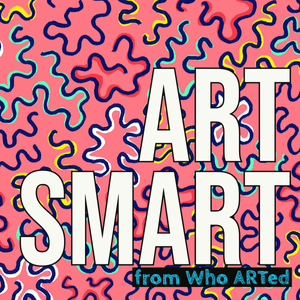
Art Smart
Kyle Wood
1 Creator
1 Creator


4 Listeners
All episodes
Best episodes
Seasons
Top 10 Art Smart Episodes
Goodpods has curated a list of the 10 best Art Smart episodes, ranked by the number of listens and likes each episode have garnered from our listeners. If you are listening to Art Smart for the first time, there's no better place to start than with one of these standout episodes. If you are a fan of the show, vote for your favorite Art Smart episode by adding your comments to the episode page.

Modern Art
Art Smart
07/20/22 • 10 min
Most art historians tend to say the shift to modernism started in the mid to late nineteenth century. This was an era of rethinking the old rules, breaking free from the established traditions and experimenting with new ways of working. There is not one specific artwork that ushered in the modern era. It was not birthed on one specific day. It was an evolution, but if I were to look for a dividing line I would say that the modern era started around the time that Daguerre gave us his photographic method. Photography becoming more accessible changed the way artists worked. Painters were liberated in a way because they no longer needed to focus on capturing an accurate likeness. Those who wanted realistic pictures could simply take a photograph. Of course, the new technology could also threaten their livelihood as patrons could now choose between a painting and a photograph for their portraits. Regardless of whether artists considered the new technology as an opportunity or a threat, the end result was artists experimenting and becoming more abstract. They focused on things the camera could not capture. At first, the Impressionists looked at color, then Post-Impressionists moved on to the expressive qualities. As I said the work became increasingly abstract until artists like Jackson Pollock were simply dripping paint onto the canvas. So what is the connection between Impressionists focusing on what they saw and Jackson Pollock’s action painting? Why do all of these movements fall under the modern umbrella? I would say the through line with modernism is a philosophy rooted in the idea that artists could capture some objective truth that would make the work timeless and universal. The impressionists were focused on optics and how the human eye perceives color. The abstract expressionists ran with the modernist quest to distill art down to a fundamental essence and took it to its logical conclusion. They broke art down to the basic elements like line, color, and texture to create a sense of movement and an expressive composition that was free of specific subject matters which would have tied it to a time and culture.
Go to the Art Smart website (https://www.artsmartpodcast.com/art-erasmovements/modern-art) to see images of the artworks I mentioned as well as podcasts about those artists.
If you are looking for a little extra credit and want to learn more about the artists listed in this episode, check out the following episodes of Who ARTed:
Vincent van Gogh | The Starry Night
Wassily Kandinsky | Yellow Red Blue
Art Smart is an Airwave Media Podcast.
Connect with me:
Website | Twitter | Instagram | Tiktok
Support the show:
Merch from TeePublic | Make a Donation
One of the best ways to support the show is to help it grow. Tell a friend about it, or leave a rating or review on your favorite podcast app.
Learn more about your ad choices. Visit megaphone.fm/adchoices


4 Listeners

Cubism
Art Smart
09/28/22 • 10 min
In 1907, Pablo Picasso and George Braque developed art from a new perspective. They began creating works that seemed fragmented and at times almost unrecognizable. The idea was to show the subject from multiple perspectives all in one composition.
Art Smart is an Airwave Media Podcast.
Connect with me:
Website | Twitter | Instagram | Tiktok
Support the show:
Merch from TeePublic | Make a Donation
As always you can find images of the work being discussed at www.ArtSmartPodcast.com and of course, please leave a rating or review on your favorite podcast app. You might hear it read out on the show.
Learn more about your ad choices. Visit megaphone.fm/adchoices


3 Listeners
1 Comment
1
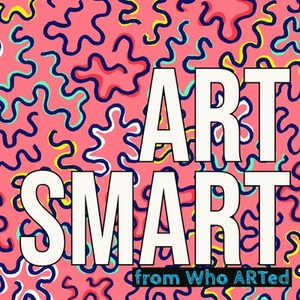
Elements of Art: Space
Art Smart
01/04/22 • 5 min
This episode is about the Element of Art, Space. In addition to the depth created in the foreground, middle ground and background, artist think about the positive and negative space in a composition. In this episode I referenced a classic illusion playing with positive and negative space. You can find the image reference here.
If you enjoy the podcast, please follow and rate it on Spotify or wherever you get your podcasts. If you want to learn more about art and art history, check out my other podcast, Who ARTed, where each week I cover a different artist and their work along with fun fact mini-episodes every Friday to give you an interesting story that isn't covered in the standard art history survey course.
You can also find more information and resources at www.whoartedpodcast.com
Learn more about your ad choices. Visit megaphone.fm/adchoices

2 Listeners
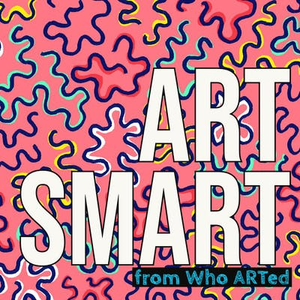
Elements of Art: Shape
Art Smart
01/04/22 • 4 min
This episode is about the Element of Art: Shape. A shape occurs when a line bumps into itself. Learn about different types of shapes and their uses within a composition.
If you enjoy the podcast, please follow and rate it on Spotify or wherever you get your podcasts. If you want to learn more about art and art history, check out my other podcast, Who ARTed, where each week I cover a different artist and their work along with fun fact mini-episodes every Friday to give you an interesting story that isn't covered in the standard art history survey course.
You can also find more information and resources at www.whoartedpodcast.com
Learn more about your ad choices. Visit megaphone.fm/adchoices

2 Listeners
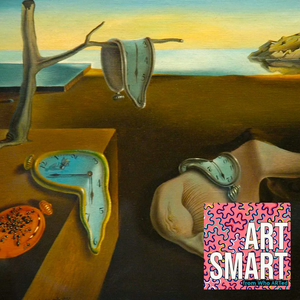
Surrealism
Art Smart
08/17/22 • 12 min
Andre Breton, was a poet, but he had also studied medicine and psychiatry. He was well versed in Freud’s theories and in 1924, Breton wrote the surrealist manifesto. The core idea behind the wide ranging movement was that reason and logic constrain a person’s mind and that if an artist were to break free of those constraints, they could tap into a more vast area of the unconscious mind.
If you want to learn more about the artists mentioned in this episode, check out Who ARTed on your favorite podcast app, or click the following links to hear the relevant episodes.
Salvador Dali | The Persistence of Memory
Rene Magritte | The False Mirror
Art Smart is an Airwave Media Podcast.
Connect with me:
Website | Twitter | Instagram | Tiktok
Support the show:
Merch from TeePublic | Make a Donation
As always you can find images of the work being discussed at www.ArtSmartPodcast.com and of course, please leave a rating or review on your favorite podcast app. You might hear it read out on the show.
Learn more about your ad choices. Visit megaphone.fm/adchoices

2 Listeners
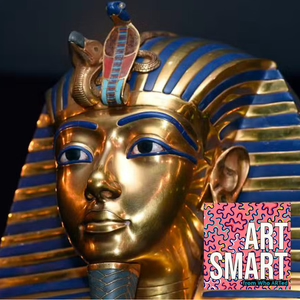
Ancient Egyptian Art
Art Smart
09/14/22 • 12 min
In two-dimensional art, the ancient Egyptians practiced an approach referred to as frontalism. Each feature was shown from the ideal, most recognizable view. The head was shown in profile while the torso was facing forward. The feet would then be shown from the side as that was a more easily recognizable shape for a foot. The result was a mix of perspectives on the figure making it appear contorted but it was the ideal symbol rendering each part in ways that would be easily identified.
Another distortion we see in ancient Egyptian artifacts was hierarchical scale. Simply put, the more important a figure was, the bigger it would be in the composition. Conversely, a less important figure would be smaller. So gods and pharaohs would be shown as noticeably larger than the average Egyptian.
If you want to learn more about ancient Egypt, check out these episodes of Who ARTed:
Art Smart is an Airwave Media Podcast.
Connect with me:
Website | Twitter | Instagram | Tiktok
Support the show:
Merch from TeePublic | Make a Donation
As always you can find images of the work being discussed at www.ArtSmartPodcast.com and of course, please leave a rating or review on your favorite podcast app. You might hear it read out on the show.
Learn more about your ad choices. Visit megaphone.fm/adchoices

2 Listeners
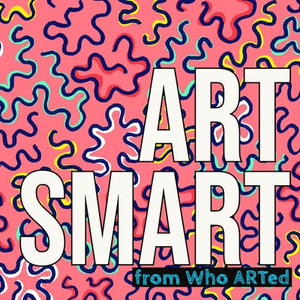
Elements of Art: Color
Art Smart
01/04/22 • 8 min
This episode is about the Element of Art: Color. Learn about what color is, how we see it, and the different sets of primary colors.
If you enjoy the podcast, please follow and rate it on Spotify or wherever you get your podcasts. If you want to learn more about art and art history, check out my other podcast, Who ARTed, where each week I cover a different artist and their work along with fun fact mini-episodes every Friday to give you an interesting story that isn't covered in the standard art history survey course.
You can also find more information and resources at www.whoartedpodcast.com
Learn more about your ad choices. Visit megaphone.fm/adchoices

2 Listeners
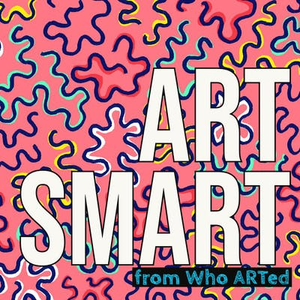
Elements of Art: Line
Art Smart
01/04/22 • 5 min
This episode is all about the Element of Art: Line. In Art, we consider a mark with length and direction to be a line. Lines can be long or short, they can be straight, wavy, zig-zag, jagged, thick, or thin. Lines can be solid or dotted; we might even talk about a line that is not physically present in the work but merely suggested by other elements we see.
If you enjoy the podcast, please follow and rate it on Spotify or wherever you get your podcasts. If you want to learn more about art and art history, check out my other podcast, Who ARTed, where each week I cover a different artist and their work along with fun fact mini-episodes every Friday to give you an interesting story that isn't covered in the standard art history survey course.
You can also find more information and resources at www.whoartedpodcast.com
Learn more about your ad choices. Visit megaphone.fm/adchoices

2 Listeners
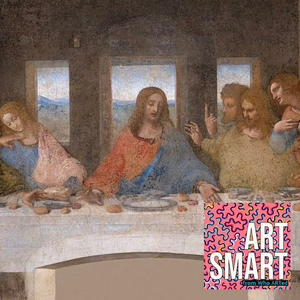
The Renaissance
Art Smart
08/31/22 • 13 min
The word Renaissance means re-birth. Around 1400 CE there was a tremendous shift in visual arts and other aspects of culture. One major influence in the Renaissance was an appreciation for Greek and Roman art and philosophy. While a lot of the works of Plato, Aristotle and others had been lost to Europeans in the middle ages, many of the ancient texts had been translated by Muslim scholars starting around the 8th century and through trade, the texts were re-introduced to Europe. The Italian peninsula was a center for trade bringing together people of various cultures to spread ideas, and resulting in wealthy city-states that could support a thriving arts community. Still, the Renaissance also took hold in Northern Europe although it did look a little different.
If you want to learn more about the Renaissance, check out these artists/works:
Michaelangelo | The Sistine Chapel
Raphael | The School of Athens
Donatello | David
Jan van Eyck | The Arnolfini Portrait
Art Smart is an Airwave Media Podcast.
Connect with me:
Website | Twitter | Instagram | Tiktok
Support the show:
Merch from TeePublic | Make a Donation
As always you can find images of the work being discussed at www.ArtSmartPodcast.com and of course, please leave a rating or review on your favorite podcast app. You might hear it read out on the show.
Learn more about your ad choices. Visit megaphone.fm/adchoices

2 Listeners
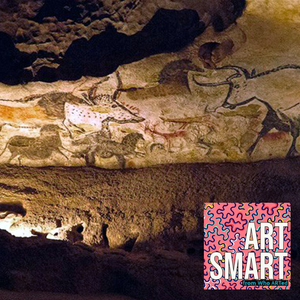
Prehistoric Art
Art Smart
10/05/22 • 11 min
Art is as old as humanity. I have often said that art is what defines us as human. It is why and how we got out of the trees. The ability to express ourselves creatively is what allows humans to come together, to understand each other, to envision a better future. While prehistoric art predates recorded history and therefore we have no artist’s statements giving us certainty into the intentions behind these works, we do see clues in the designs, the materials used by the aritsts, and the placement of the pieces.
My 5 favorite prehistoric pieces (links to episodes of Who ARTed when applicable):
The world's oldest artwork - handprint fossils
The Running Horned Woman
Stonehenge
Art Smart is an Airwave Media Podcast.
Connect with me:
Website | Twitter | Instagram | Tiktok
Support the show:
Merch from TeePublic | Make a Donation
As always you can find images of the work being discussed at www.ArtSmartPodcast.com and of course, please leave a rating or review on your favorite podcast app. You might hear it read out on the show.
Learn more about your ad choices. Visit megaphone.fm/adchoices


2 Listeners
Show more best episodes

Show more best episodes
Featured in these lists
The best podcasts for Art Lovers
Curated by Kyle Wood
FAQ
How many episodes does Art Smart have?
Art Smart currently has 48 episodes available.
What topics does Art Smart cover?
The podcast is about Visual Arts, Podcasts, Education and Arts.
What is the most popular episode on Art Smart?
The episode title 'Modern Art' is the most popular.
What is the average episode length on Art Smart?
The average episode length on Art Smart is 14 minutes.
How often are episodes of Art Smart released?
Episodes of Art Smart are typically released every 7 days.
When was the first episode of Art Smart?
The first episode of Art Smart was released on Jan 4, 2022.
Show more FAQ

Show more FAQ